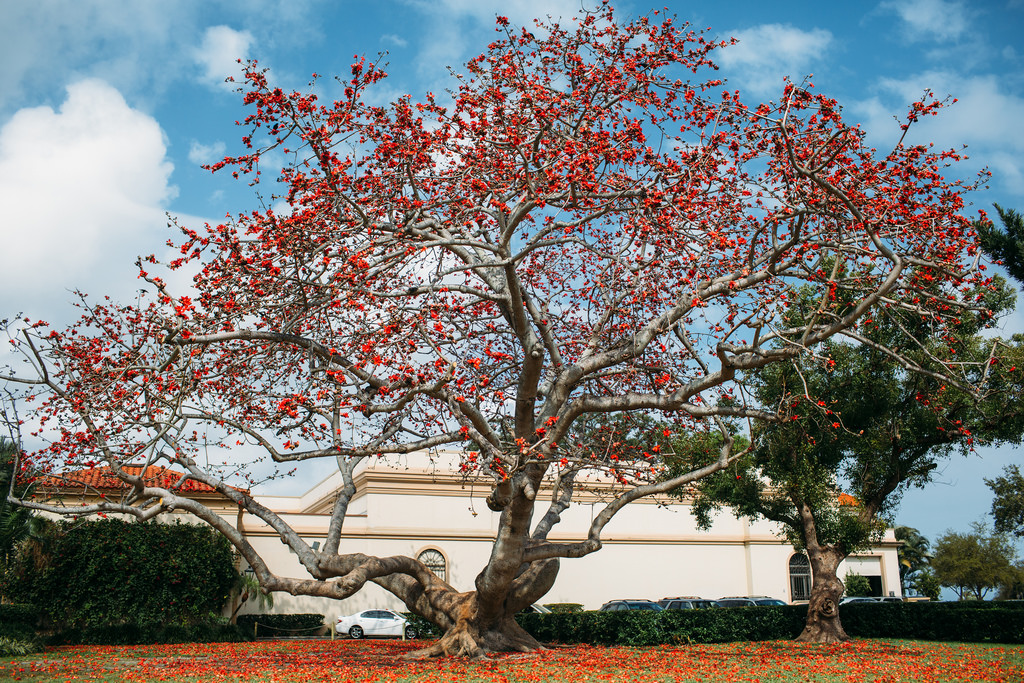
In early spring, Guangzhou comes alive with flamboyant and vibrant Kapok flowers. People have seen them, admired them, but not paid very much attention to them. The Kapok flower is actually the city flower of Guangzhou, a fact which many are not aware of.
The Kapok flower is a part of the Bombax Ceiba tree, which belongs to the family of cotton trees. The tree is found mainly in South and Southeast Asia. It grows the best in hot and wet climates which is possibly why it thrives here in Guangzhou. (wildfibres.com) The Bombax Ceiba tree, with flowers which have often been described as “flames of the forest,” have much more to them than just their visual appeal. Not only are they beautiful, but they’re also very useful.
The Kapok flower bursts at the end of its growing season, releasing tennis ball sized amounts of cotton into the air. The flowers open at night, and emit an unpleasant odor, attracting bats which pollinate these flowers.
The rough cotton fibers can be used for many purposes, but are mainly used as stuffing for a wide assortment of things. An interesting fact about the Bombax Ceiba trees is that it was never have supposed to have been planted by humans. Instead, its spread has been attributed to the wind, which carried the cotton and seeds released by the flower to many different places. The fiber released by the Kapok flower was used as filling material to stuff pillows and furniture from the 17th to the 19th century. It was also used as filling material for life jackets, due to its porousness. Kapok fibers’ usage declined because of the World War, when cheaper and more widely available materials were needed in large quantities. The seed of the Kapok tree is used for oil and the bark of the Kapok tree aids in making gum. (tropical.theferns.com)
The Bombax Ceiba tree was supposed to have been extremely important in Mayan culture. Mayans allegedly believed that the souls of the dead could only reach heaven through the Bombax Ceiba tree’s highest branches. (niscair.in) The Kapok flower is also widely used in Chinese, and East Asian cultures. In China, Kapok flowers are dried and preserved to make herbal teas, and in Thailand and Burma, it is used in curries and sauces. (chinadaily.com)